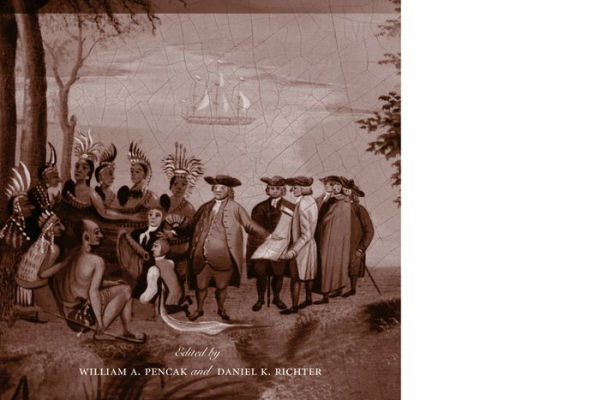William Pencak and Daniel Richter have assembled some of the most talented young historians working in the field today. Their approaches and subject matter vary greatly, but all concentrate less on the mundane details of how Euro- and Indian Pennsylvanians negotiated and fought than on how people constructed and reconstructed their cultures in dialogue with others. Taken together, the essays trace the collapse of whatever potential may have existed for a Pennsylvania shared by Indians and Europeans. What remained was a racialized definition that left no room for Native people, except in reassuring memories of the justice of the Founder.
Pennsylvania came to be a landscape utterly dominated by Euro-Americans, who managed to turn the region’s history not only into a story solely about themselves but a morality tale about their best (William Penn) and worst (Paxton Boys) sides. The construction of Pennsylvania on Native ground was also the construction of a racial order for the new nation. Friends and Enemies in Penn’s Woods will find a broad audience among scholars of early American history, Native American history, and race relations.
William Pencak and Daniel Richter have assembled some of the most talented young historians working in the field today. Their approaches and subject matter vary greatly, but all concentrate less on the mundane details of how Euro- and Indian Pennsylvanians negotiated and fought than on how people constructed and reconstructed their cultures in dialogue with others. Taken together, the essays trace the collapse of whatever potential may have existed for a Pennsylvania shared by Indians and Europeans. What remained was a racialized definition that left no room for Native people, except in reassuring memories of the justice of the Founder.
Pennsylvania came to be a landscape utterly dominated by Euro-Americans, who managed to turn the region’s history not only into a story solely about themselves but a morality tale about their best (William Penn) and worst (Paxton Boys) sides. The construction of Pennsylvania on Native ground was also the construction of a racial order for the new nation. Friends and Enemies in Penn’s Woods will find a broad audience among scholars of early American history, Native American history, and race relations.

Friends and Enemies in Penn's Woods: Indians, Colonists, and the Racial Construction of Pennsylvania
336
Friends and Enemies in Penn's Woods: Indians, Colonists, and the Racial Construction of Pennsylvania
336Paperback(New Edition)

Product Details
| ISBN-13: | 9780271023854 |
|---|---|
| Publisher: | Penn State University Press |
| Publication date: | 06/15/2004 |
| Edition description: | New Edition |
| Pages: | 336 |
| Product dimensions: | 6.00(w) x 9.00(h) x 0.78(d) |
